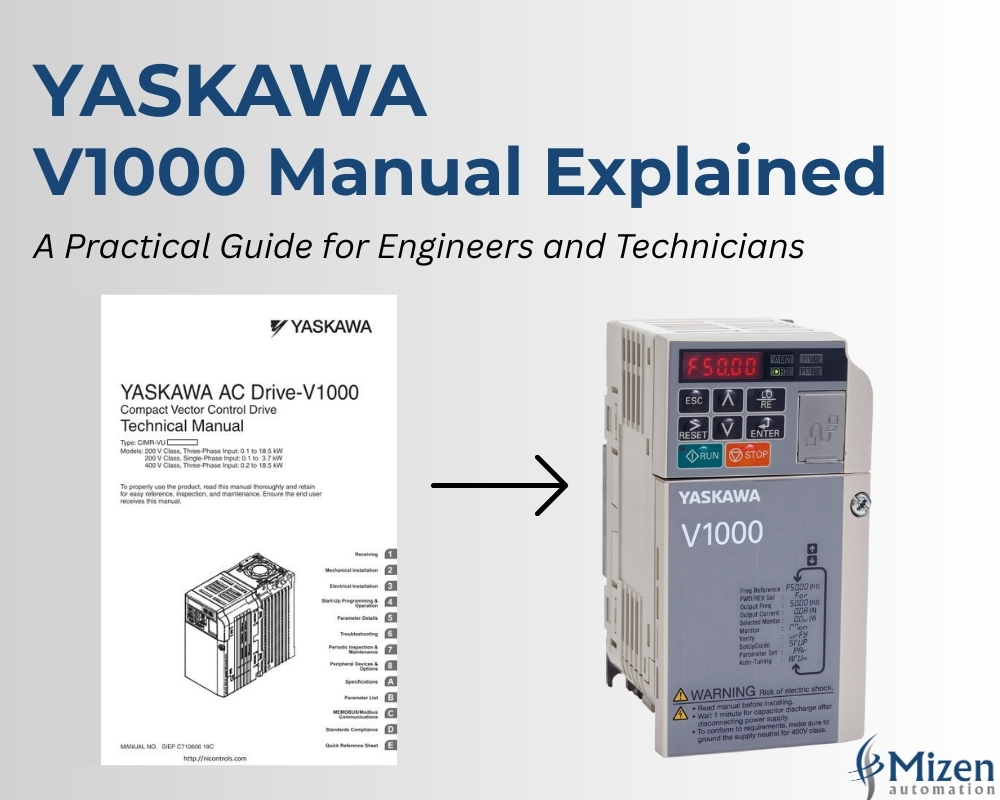No items

What is SCADA? A Simple Guide to Supervisory Control and Data Acquisition
Ever wondered how water treatment plants keep their operations running 24/7? Or how one operator can monitor hundreds of pumps

From smarter machines to more resilient supply chains, these are the key trends shaping the future of automation.
Technology is advancing rapidly, and industrial automation is evolving beyond simply improving efficiency. Today, businesses must stay competitive in a world facing global supply challenges and labour shortages. Companies need to adopt smarter and more flexible automation technologies to meet these demands.
At Mizen Automation, we work closely with customers across Australia and New Zealand to keep up with industry changes. Here are six trends driving automation in 2025 and how they could impact your business.
Artificial Intelligence (AI) is transforming factory operations behind the scenes. AI-powered systems now help manufacturers spot potential problems early, adjust production settings automatically, and make decisions without needing human input. A significant development is Edge AI, which processes data directly on devices like PLCs or sensors on the factory floor rather than relying on cloud connectivity. This leads to faster responses, fewer delays, and better performance even in remote or fast-paced environments.
For your business, this means you can expect more advanced PLCs and drives from manufacturers like Siemens and Allen-Bradley to come with AI capabilities built in. These smart components can help reduce downtime, optimise energy use, and let you respond more quickly when issues arise.
Predictive maintenance has become the standard as manufacturers shift from reactive repairs to data-driven strategies. Instead of waiting for machines to break down, companies now use sensors, software, and AI to predict when parts might fail so they can intervene early. This approach reduces unexpected downtime, lowers maintenance costs, and improves workplace safety. Due to affordable sensors and cloud or edge AI technologies, predictive maintenance is achievable for even smaller manufacturers. If you plan to upgrade your systems, consider drives and PLCs with diagnostic and data logging features. At Mizen, we supply a wide range of parts that make implementing predictive maintenance easier.
The Industrial Internet of Things (IIoT) is becoming a key foundation of modern automation by linking machines, sensors, and control systems to share data in real time. This connectivity enables businesses to monitor equipment remotely and make faster, more informed decisions. IIoT is essential for scaling automation efforts, and with more affordable and flexible devices now available, it is accessible to manufacturers of all sizes. In 2025, faster networks like 5G and private wireless systems will support reliable, low-latency IIoT deployments even in challenging or remote locations, improving efficiency and responsiveness.
Recent global disruptions have led manufacturers to rethink production, logistics, and storage processes. Automation now plays a crucial role in making supply chains quicker, more local, and more flexible. One important advancement is the use of digital twins. These are virtual replicas of production lines, warehouses, or logistics networks that update in real time. When combined with IIoT sensors, digital twins help manufacturers identify bottlenecks, simulate different scenarios, and optimise processes before applying changes on the factory floor. This trend has increased demand for decentralised automation solutions like compact PLCs, remote I/O modules, and AI-powered digital twin platforms. These tools allow businesses to adapt quickly and enhance supply chain visibility and agility.
This year, the focus of industrial automation has shifted away from replacing human workers toward creating smarter ways for people and machines to work together. Technologies like wearable devices give workers instant access to information, while voice-controlled interfaces and user-friendly HMIs make operating machines simpler than ever. Collaborative robots, or cobots, are designed to work safely alongside humans, handling repetitive or heavy tasks while people focus on more complex decisions.
As a result, there’s growing demand for automation tools that are powerful yet easy to use. Businesses want systems their teams can quickly learn and use confidently, without needing extensive technical training. Cobots lead this shift. They are now more affordable, easier to program, and flexible enough for many applications.
Energy efficiency is now a necessity, not just a bonus. More companies are investing in automation technologies that help reduce energy use and emissions. From energy-smart Variable Frequency Drives (VFDs) to low-power PLCs, businesses are looking for solutions that support their sustainability goals without sacrificing performance.
The pressure to operate more sustainably is increasing. Automation plays a significant role in helping manufacturers streamline operations, minimise waste, and meet stricter ESG requirements. We’re seeing more factories adopt carbon-tracking systems and energy-efficient robotics, making it easier to measure and improve their environmental impact.
At Mizen, sustainability is built into the design of our solutions. We help businesses boost efficiency, reduce waste, and meet their environmental targets without compromising on productivity.
The future of industrial automation is intelligent, connected, and adaptable. Whether you are upgrading factory systems or replacing old equipment, understanding these trends will help you prepare for what’s ahead. If you need support with your automation projects, contact our team to discuss how we can help you achieve your goals in 2025.

Ever wondered how water treatment plants keep their operations running 24/7? Or how one operator can monitor hundreds of pumps

The Yaskawa V1000 is one of the most commonly used compact AC drives in the world. It is known for

If you have any questions get in contact with us via our enquiry form or call us on +64 (0) 3 964 0692.
"*" indicates required fields